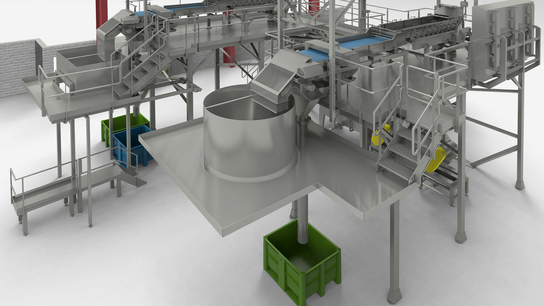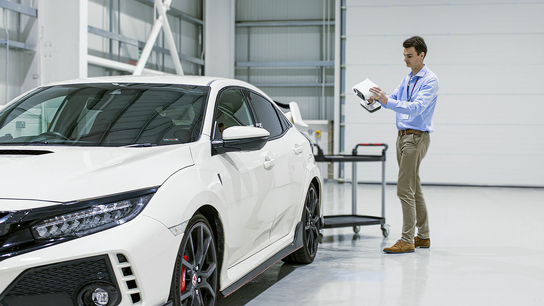Reverse engineering perfectly-fitting automobile floor mats
The Goal: To 3D scan each car’s automobile floor and trunk onsite, and use this to create final 3D models that will be used to manufacture the floor and trunk mats.
Tools Used: Artec M, Artec Studio
Nika Holding is a manufacturer of automotive accessories. The company has been in the automotive accessories market for about 2 years, engaged in production of floor mats for trunks and interiors. During this period many leading car makers, such as Nissan, Skoda, Renault, Peugeot, have become clients.
Nika Holding produces mats based on a method that is impossible without scanning. Computer processing of the data ensures a perfect fit of a pattern to the automobile surface. After researching the market for existing technologies, the company tried the M Model scanner made by Artec.




“In choosing this particular model, we knew we needed a rather compact device so that it would be easy to scan with it in the tight confines of a car interior. Also, the scanner would often be used in production in conditions where the sturdiness of the casing would be especially important,” comments an employee at Nika Holding.


This is how the process of making mats works:
- An order to produce mats is received from a car maker.
- A company employee goes out to the car showroom, where he scans the car interior. Scanning the interior of an automobile is not easy, since the space in a salon is rather tight and dark. Therefore, to obtain an acceptable result, about 6 scans are done from various angles. Scan time is 15 minutes. The ease of capturing depends on the upholstery material. Bright interiors scan more quickly and easily, while digitizing dark, especially black, nappy surfaces takes longer.
- To obtain a high-quality model of a trunk interior about 20 scans are done. Scanning takes about 30 minutes.
- Data is processed in Artec Studio, and models are exported in a commonly used format and used as a template for sketches in other software.
- After that a CNC turns out a semi-finished matrix out of Medium Density Fiberboard (MDF).
- Then the semi-finished material is further processed until it is ready.
- The next stage is forming. A polymer sheet is vacuum-formed by a special device to create the finished product.
- The final stage is “cosmetic” detailing – trimming (removing burr) and packaging, after which the product is sent to the customer.




"The technological process based on 3D scanning of a car salon is much easier and faster,” says the chief technologist of Nika Holding. Traditionally one has to take all the measurements with a tape measure, and for reliability, you would have to repeat each measurement many times. 3D scanning makes it possible to automate all measurements and immediately obtain an accurate computer model that is ready to be sent to the machine which produces the form.”


An employee of Nika says the main advantages of working with Artec are the noncontact and rapid scanning of automobile interiors and trunks, the user-friendly interface of the Artec Studio 8.0 software, and the ease and simplicity of using the devices themselves.
Scanners behind the story
Try out the world's leading handheld 3D scanners.




